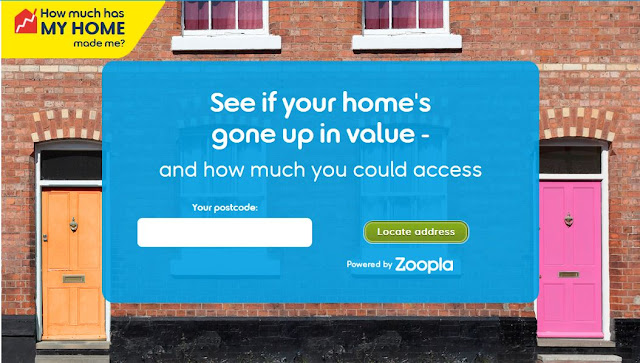Reincarnating dead capital
“Your house is not an investment” is often recited as sage
advice within personal finance circles. The premise is that investments must
produce a steady stream of positive cash flow in order to be considered as
such. Your home does not qualify as an investment as there is no rental income
earned from the property whilst you are living there. Furthermore, the majority
of homeowners finance their purchases via mortgages which require monthly
funding thereby reducing net monthly cash flow. Arguably, despite benefiting
from living in it your house is a liability whilst you still have a mortgage.
Should I own my home outright?
Consider the following question: should you ever aim to own
100% of your property?
To some, the answer appears to be “obviously yes!”, the
theory being that if you own your home outright then you don’t need to pay a
mortgage and the associated interest payment to a bank. However, the problem is
slightly more nuanced.
Were you to have 10% equity in a property there would be a
marginal benefit to owning an additional 15% bringing your ownership up to 25%.
The reason is that mortgage interest rates tend to be calculated as a function
of the amount of equity. As you own more of the property, the loan to value
ratio (the percentage of the property funded from debt) declines. As the loan
to value ratio declines, the borrower is charged a lower interest rate. This
occurs in stages – think of it in terms of steps such that the incremental
interest rate saving occurs in loan to value bandings.
The interest rate savings are not continuous. Beyond certain
percentages of equity, there incremental interest rate savings drops off. This
differs for different lenders but a simple rule of thumb might be that beyond
50% equity in a property, there is little to no interest rate savings. For
example, the change in equity from 30% to 50% might reduce your interest rate
from 2.5% to 1.5%. However, an increase in ownership from 50% to 60% could
still result in the interest rate charged remaining at 1.5%.
The dead capital theory
Let’s think of a really simple example and consider the
optimal financial strategy. Let’s say you were going to purchase a £1 million
house (I wish!). Fortunately, you have lots of cash at your disposal; £750,000 to
be precise. However, you notice that interest rates are held fixed at 1.5% for
any ownership greater than 50%. In this scenario, it isn’t optimal to own 75%
equity in the property. The reason is twofold:
a)
There is no step change in debt interest cost
for every £1 borrowed above £500,000. The rate remains 1.5% regardless of
whether you borrow £500,000 or £250,000 as no interest savings are available;
b)
Instead of owning the additional 25% to take
your ownership up to 75% you could invest the additional £250,000 in cash
elsewhere.
Owning £750,000 of the property wastes the opportunity to
invest £250,000. Effectively, £250,000 is dead capital, underutilised and
sub-optimal.
Where the additional £250,000 is used to purchase additional
equity in the £1 million property, the incremental interest saving is £3,750 in
interest per annum (1.5% * £250,000).
Consider utilising this dead capital. Imagine instead that
the £250,000 was invested into a £500,000 investment property. Once again,
given the 50% loan to value ratio the mortgage interest cost will be 1.5%.
However, you are able to rent out the property at a yield of about 4% of the
property value. Whilst the borrowing cost will be £3,750 for the new property,
the rental income will be £10,000, netting a cool £6,250 per annum.
Comparing the two scenarios, it’s clear that utilising dead
capital and increasing cashflow by £6,250 per annum is better than a £3,750
saving per annum.
Converting your home into an investment
Let’s take a pause for a second. During our working lives
most of us do not have the luxury of £750,000 in equity. However, as we reach
retirement many of us have been paying off mortgages and sitting on
appreciating properties for 25 to 30 years. That’s a tonne of dead capital that
isn’t being utilised!
Equity release enables you to harness some of that dead
capital. It is the means by which you can take out some of the equity that you
have built up and turn it into cash to spend however you like. Equity release
is recommended for people who have reached retirement and wish to benefit from
the equity that they have built up in their own homes. Effectively, this
transforms your home into an investment – remember that an investment is an
asset that provides positive cashflow. Equity release makes this a possibility.
You could use equity release to pay for a family trip or
wedding, for big home improvements, for a new car, to pay for healthcare, and to
provide an early inheritance for your children. Alternatively, you could use
equity release as outlined above, to release the dead capital and provide
another income stream for retirement.
How much equity can I release?
There is no such thing as a free lunch and the same is true
for equity release. Equity release is a form of debt that you will need to pay
for in the form of interest. Furthermore, the mortgage principal is repaid on
death (morbid but fair). However, the cash is earned as a tax free lump sum
payment or as regular payments.
The difficulty is in figuring out how much equity you will
be able to release. Fortunately, there is a helpful tool that tells you how much your house has increased in value that can quickly give you an idea as to how much you
could receive. It’s very easy to use
– you literally put in your post code…and that’s it!
How much equity could you release and what would
you do with it?


Post a Comment